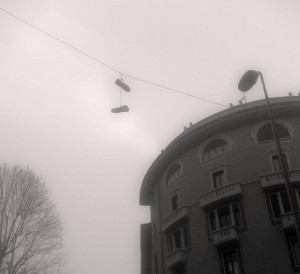Try this test.
Watch the video below in which six people, three in white shirt and three in black pass each other a basketball. While viewing it is necessary to maintain a silent count of the number of passages made by the players in white shirt.
Did you really see the gorilla?
When the experiment was presented for the first time to students of Harvard University several years ago by Christopher Chabris and Daniel Simons, about half the people did not see the gorilla. It was as if it was invisible.
This experiment reveals two things: that we lose much of what is happening around us and that we have no idea we miss so much. This has become one of the most famous experiments in psychology. It is described in many text books and it is in more than a dozen science museums. It has been used by teachers and corporate trainers, terrorists hunters, not to mention TV personalities and to help explain what we see and what we do not see.
This makes us think that many beliefs we have about our minds could be wrong.
In psychology, the selective perception is a rational error about the way we learn, briefly, it is about changing our vision of reality to see what we expect to see
Dealing with this subject in the context of sensory disable is a provocation to consider the possibility that limitations are cognitive rather than only physiological. How much of what we do not see (or hear) are informations that we do not really expect to see (or hear)?
In the controversial 2004 movie What the Bleep Do We Know!? & What the Bleep!? – Down the Rabbit Hole – that combines documentary-style interviews,computer-animated graphics, and a narrative that describes the spiritual connection between quantum physics and consciousness – Candace Pert tells a story, she truly believes. It is about the Native Americans who were not able to see the ships of Columbus, because they were outside their experience. According to an article in the Fortean Times written by David Hambling, the origins of this story will probably relate to the voyages of Captain James Cook, not Columbo. Hambling says it is likely that the story told by Pert is an exaggeration of the memories left by Captain Cook and the botanist Joseph Banks. Historians believe that Native Americans have probably seen the ship, ignoring them as they did not pose an immediate danger.
Beyond the truth of the story itself, if a blind person, blind from birth, was suddenly given back his sight, he would not know how things look, why the shadows have a particular shape. He would see everything, just he wouldn’t know what are the things he sees. The brain does not recognize the border of an object by the border of color, for example. Until the brain reassembles the elements in a recognized shape everything is only a set of colors. They Natives wouldn’t have been able to see that the ship’s shape was a positive against a background rather than a background hidden by edges of other colors. They would not have know that sails are cloth until it was explained to them. After the idea of a hanging cloth was comprehended, they could see that it was, indeed, hanging cloth. Slowly the ship would come into being, not because they could suddenly, physically, see the ship, but because they could see it AS a ship.


4 comments from the community